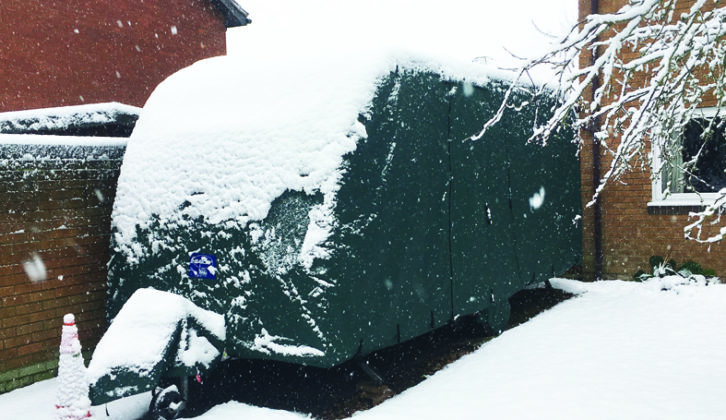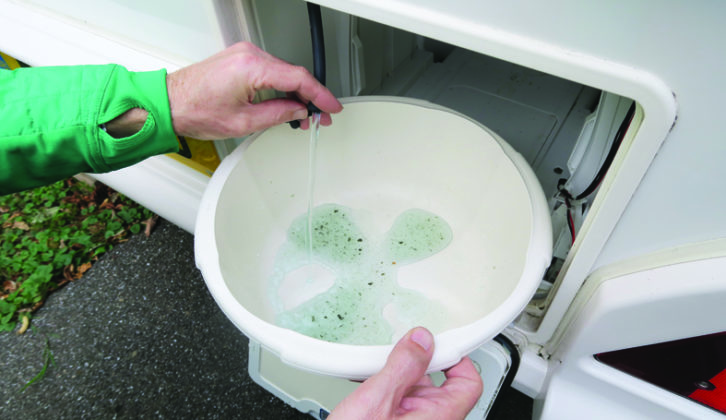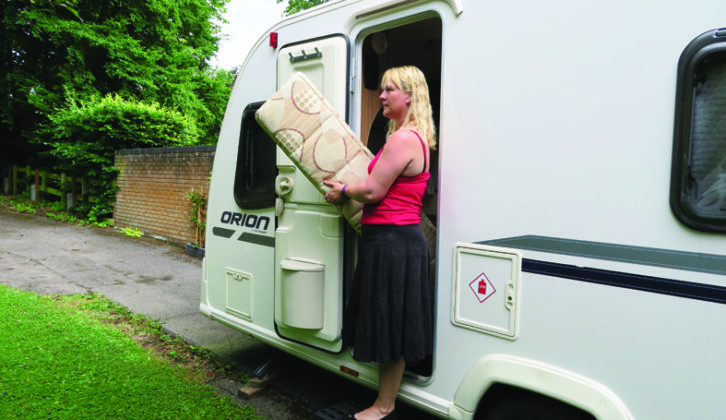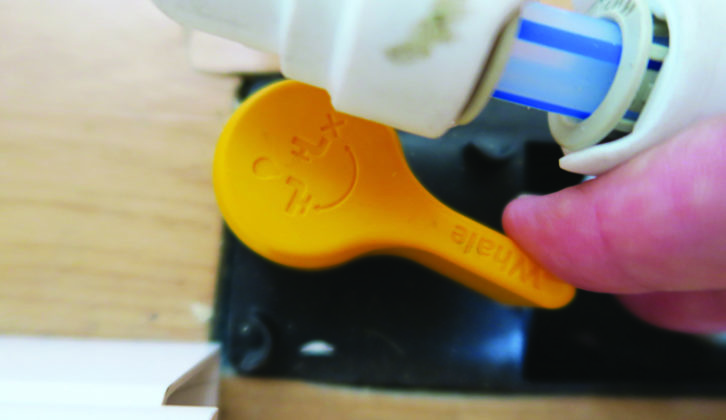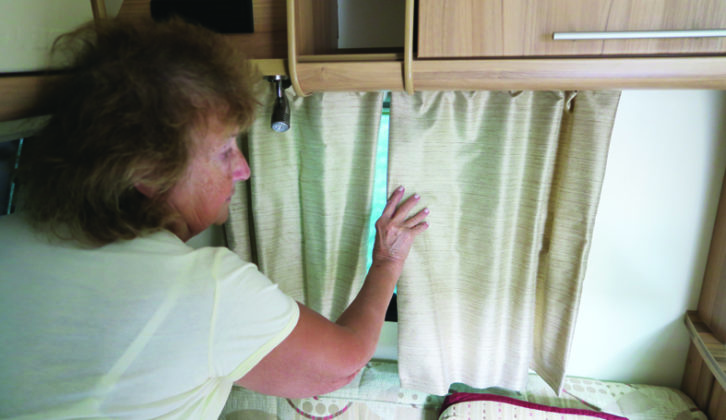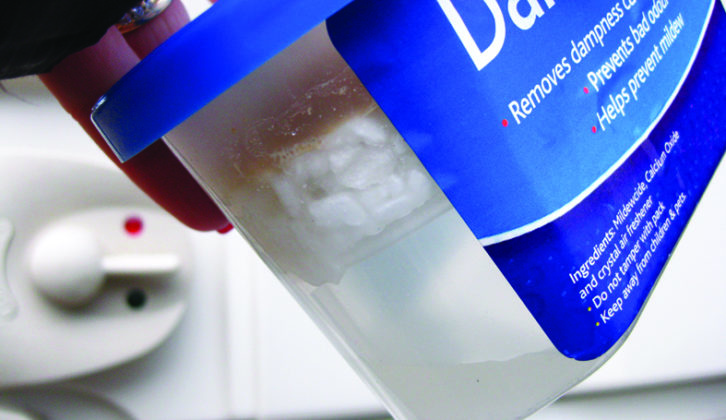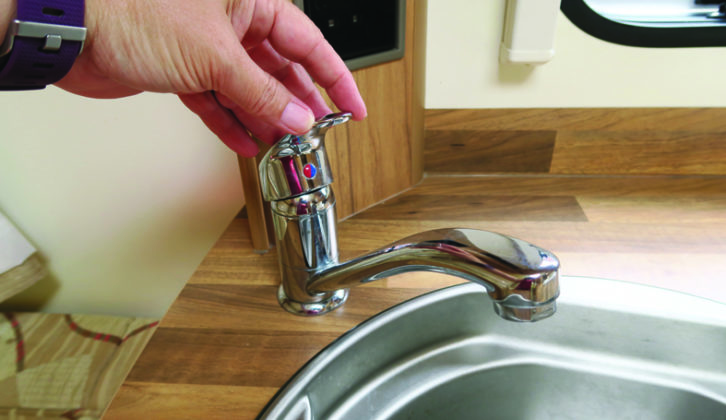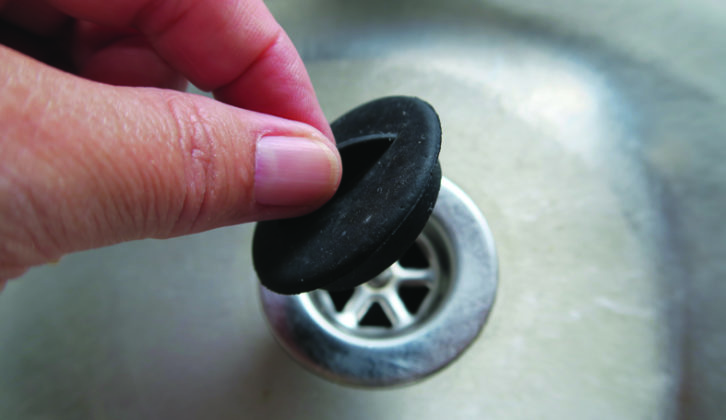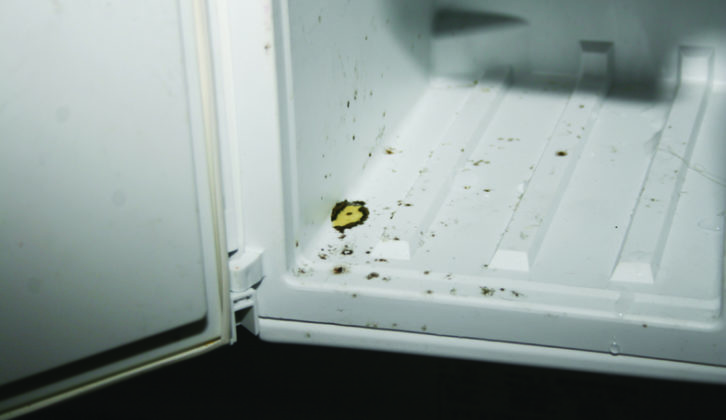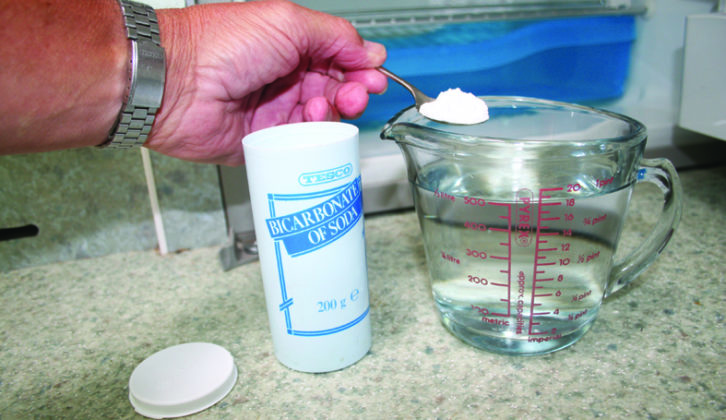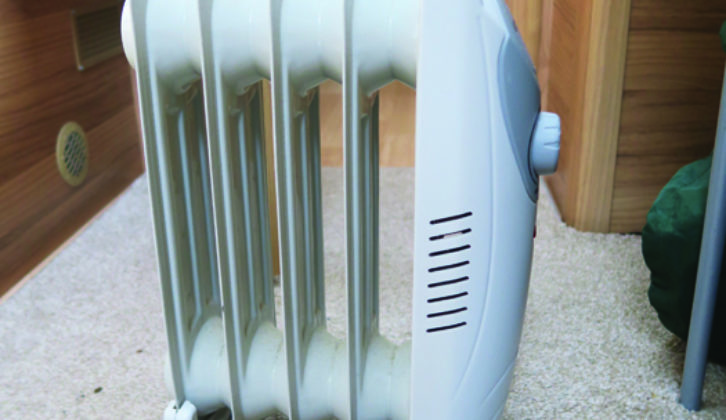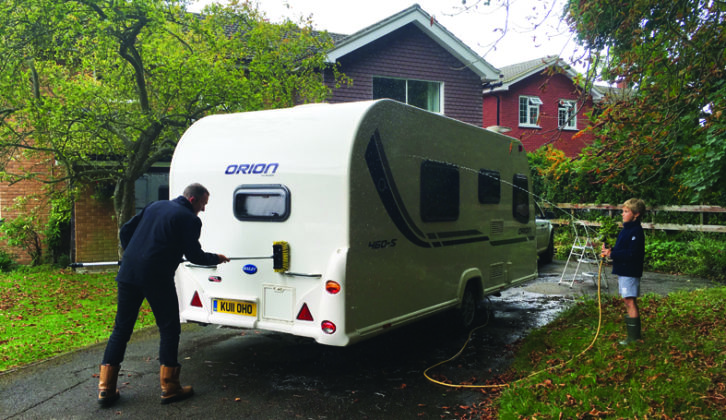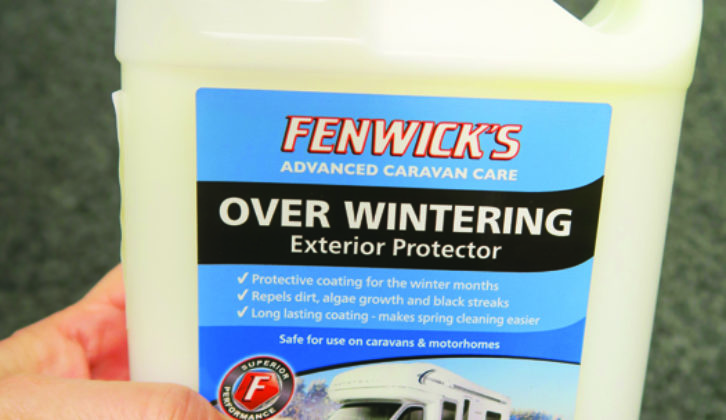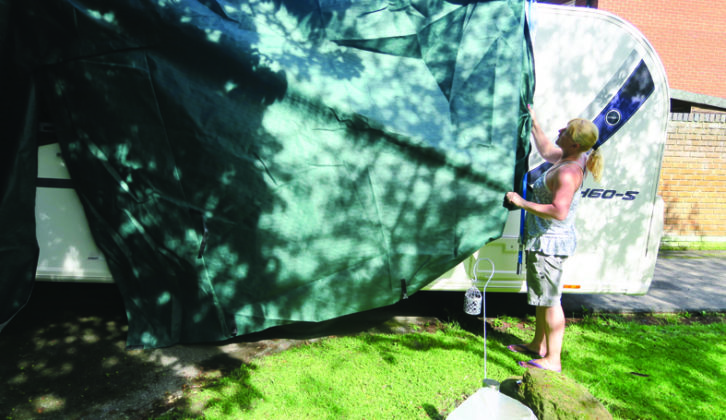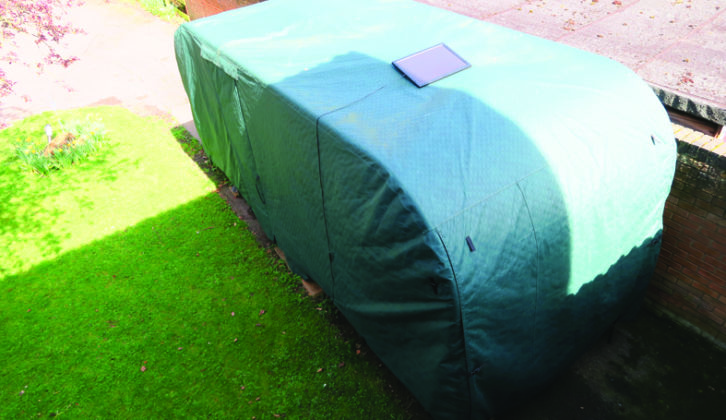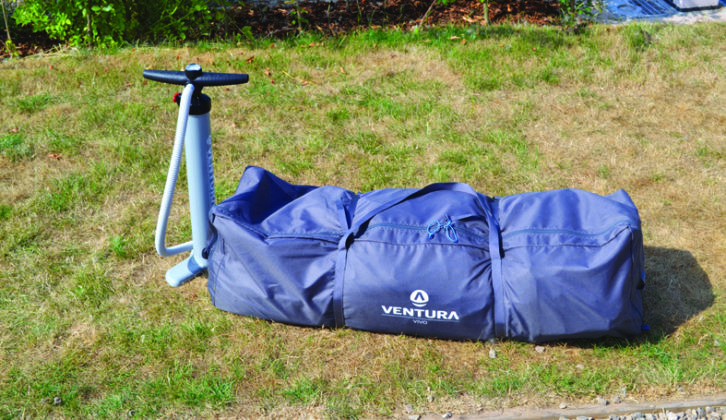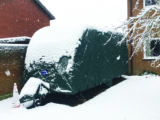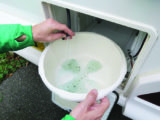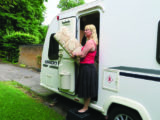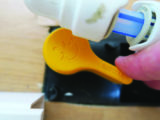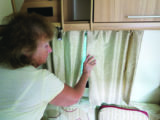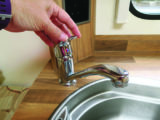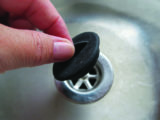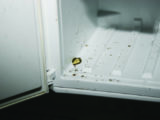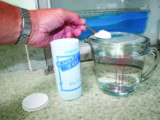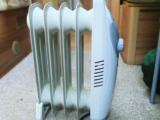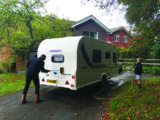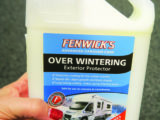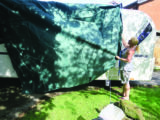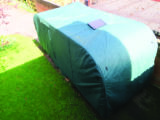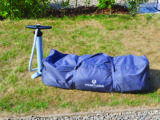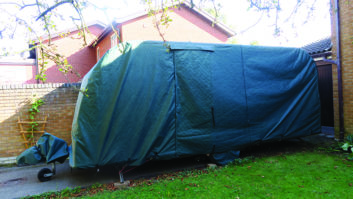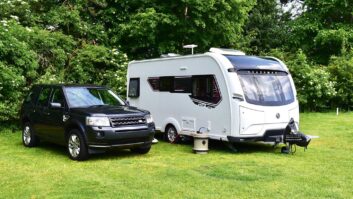The cold, dark evenings are not for everyone, and some of us like nothing better than to snuggle up at home in front of the fire.
Nothing wrong with that, but it is advisable to carry out some simple jobs before storing your caravan for the winter, or you could find it costing you when you return to it next spring.
Indoor tasks
Cleaning
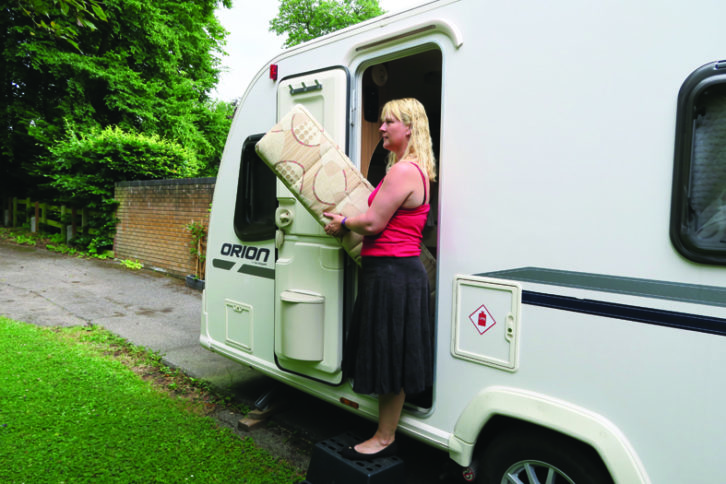
It would be remiss to leave any caravan in a mucky state, so give it a thorough clean before putting it away. Be very careful about which products you use on plastic fixtures and fittings.
Avoid household bleaches: these will damage the plastic. Products such as Thetford Bathroom Cleaner can be used not only in the bathroom, but also inside the fridge.
Alternatively, you could make up a solution of one teaspoonful of bicarbonate of soda in half a litre of warm water.
As a precaution, I take out removable carpets, cushions and upholstery, because these can get damp in colder months.
Drain-down
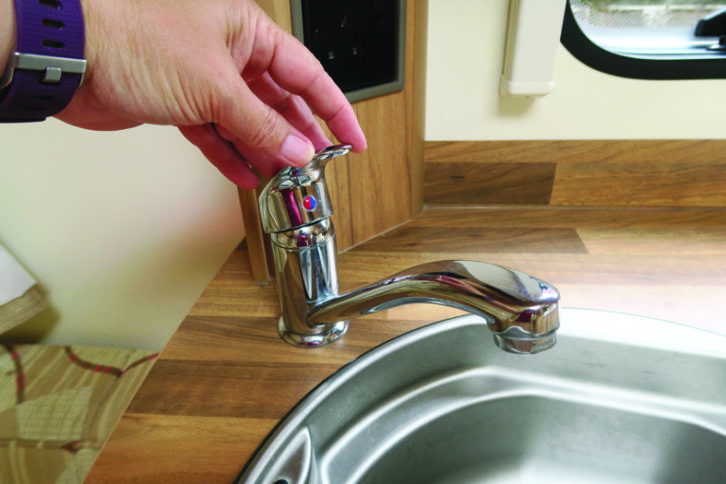
Draining down is one of the most important jobs. Water freezes at 0ºC, of course, so it is essential to drain down your caravan before storing away. Any water that is left in the pipes will expand if it freezes, which can split them.
To drain down the water heater, switch off the pump and turn the yellow tap to the open or drain-down position. Once it has finished draining, open all of the taps, including the shower tap. If you have a single-lever mixer tap, ensure that the lever is in the middle, raised position, to open both hot and cold feeds.
For absolute peace of mind, you could use a Floë Caravan Drain-Down Kit. This connects to the water in-supply at the side of the van with a foot pump or a 12V tyre compressor. Make sure it is set to no more than 15psi. Then it quite simply blasts air through the pipes to push out any residual water.
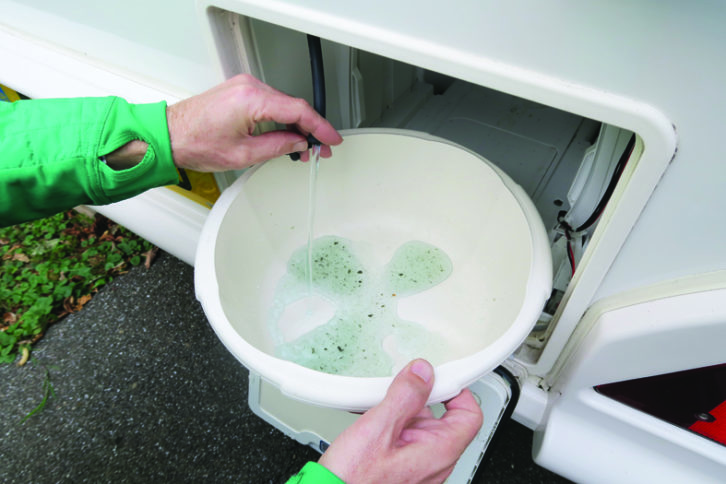
Next step is to drain down the flush-water tank to your toilet cassette, which is often overlooked. First, locate the drain-down pipe, which is usually in the locker where the toilet cassette is housed.
Using a bowl or bucket, remove the plug on the end of the drain-down pipe and be ready to catch the water. It is surprising quite how dirty the water can get!
If there is no drain-down pipe simply flush the toilet until no more water comes out, but make sure that you empty the cassette. It is also recommended that you leave the blade in the open position, to prevent the rubber seal from sticking to the blade.
To finish off, place a plug in all of the sinks, including the shower, to prevent any nasty smells from coming up through the draining holes.
Fridge
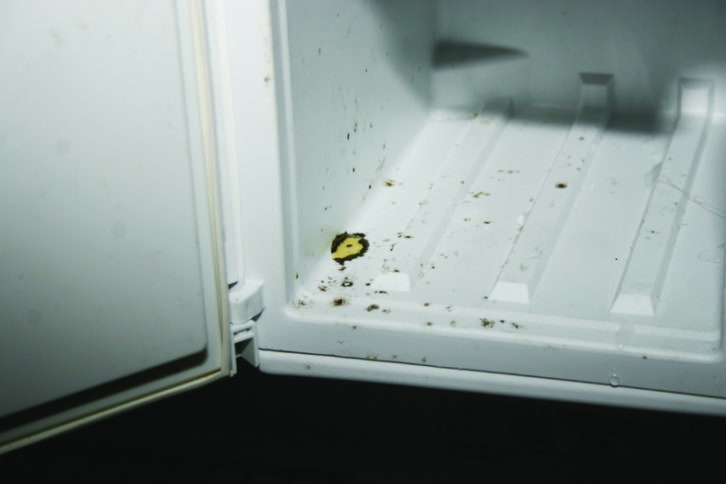
Caravan fridge and freezer compartments must be emptied and the doors left ajar. If the doors reman sealed for any length of time, there is a risk that mould could grow.
Roller blinds
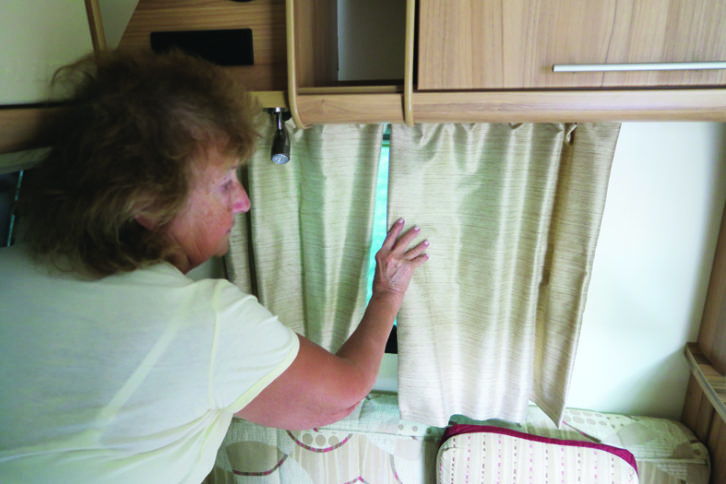
Blinds tend to be pulled down to improve security. However, leaving them in this position for long periods can cause a strain on the spring coils. My Bailey Orion comes with curtains as well as blinds, so I normally close these instead.
Dehumidifier
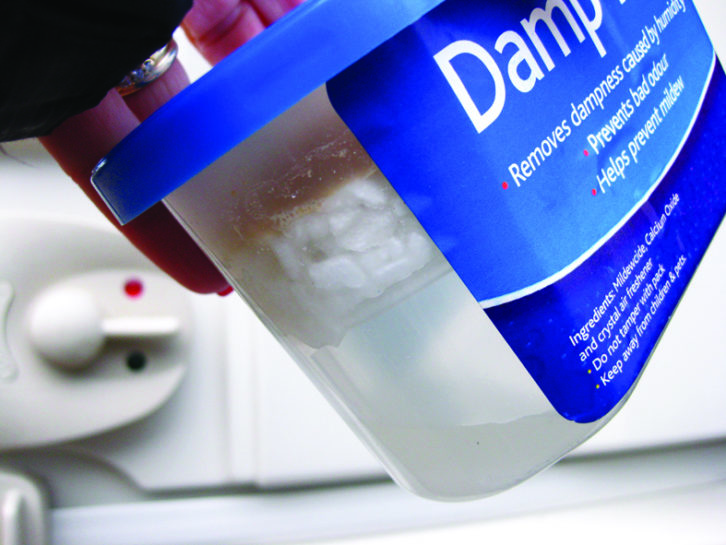
Damp is almost inevitable in winter, so install a dehumidifier or damp trap. In my first year of caravanning, I didn’t follow this rule and I’ll never forget returning to the van in spring, to find mould growing on my wooden spoons!
Low-level heating
During particularly cold snaps, I run an oil-filled radiator on a timer to keep the damp at bay. This is only viable if your van is hooked up to a mains supply on your driveway – it is important to keep an eye on it. Leaving some types of heater running unchecked is unwise.
Outdoor tasks
Leisure battery
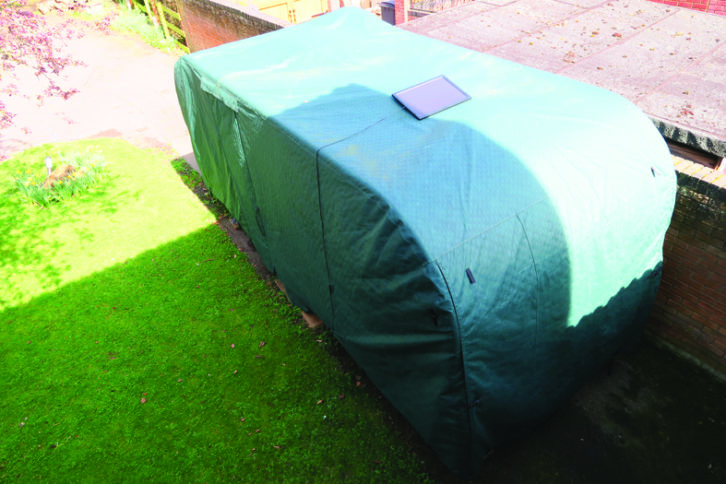
Leisure batteries will need to be monitored throughout the winter and, if left unattended, will fully discharge (12.2V or below). The battery can be maintained by hooking up the caravan to a 230V supply, which is perfect if you store your caravan on the driveway.
By using mains hook-up in your garage or house, the caravan’s built-in charger will keep the battery in a good state of charge. However, if your van is at a storage site, mains hook-up might not be an option.
One possibility is to remove the leisure battery and charge it at home. But if you have an alarm or tracker fitted, the leisure battery would need to remain in the caravan.
In that case it might be worth your while considering a solar pulse charger. Our Milenco Solar Charge maintained our leisure battery all through the winter, and could be used while the caravan was covered.
Whichever method you use to maintain your leisure battery, it is always advisable to make regular checks that the reading does not fall below 12.2V. It can be a costly mistake to neglect a leisure battery.
Gas cylinders
Gas bottles can be left in the gas locker of your caravan, as long as the valves are kept in the closed position or the regulators are disconnected.
However, if the caravan is going to a storage site, you will need to check their gas cylinder policy, because some facilities do not allow gas cylinders to be left on site. If you are storing a gas bottle at home, ensure that it is in a well-ventilated shed.
Brakes and tyres
The handbrake mechanism will sometimes seize up if left for extended periods of time, so you should chock the wheels, lower the corner steadies and release the handbrake.
Also, tyre walls can suffer during long stints in storage, especially if they are exposed to sunlight. Over time, they can start to crack or bubble.
To avoid this happening, move the caravan forwards or backwards to take the pressure off the tyre wall.
If you have no room for these manoeuvres, you could safely jack up the caravan and manually rotate the tyre instead. As an extra precaution, cover the tyres with a wheel cover to prevent UV rays prematurely ageing them.
Wash and cover
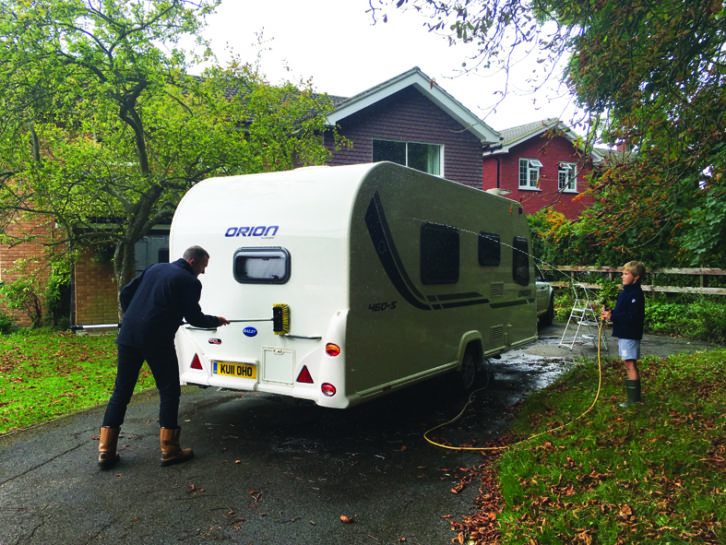
Finally, complete proceedings by giving your caravan a good wash and wax – you could get the family involved here!
The wax will offer protection by forming a barrier to keep the shine in and the dirt out. Some firms have specialised agents for this, such as Fenwick’s Overwintering Cleaner.
Covers are not to everyone’s taste, and some storage facilities don’t allow them. I find that they offer good protection from leaf mould, sap and bird mess.
It only takes a few minutes to pull the cover on and off (but always make sure that you wash your caravan before putting on its cover, to avoid scratches).
If you have waxed your van, you will find that the cover simply glides on! And when you return next spring, there is nothing better than to reveal a sparkling, clean caravan, ready for your next adventure.
Final thoughts
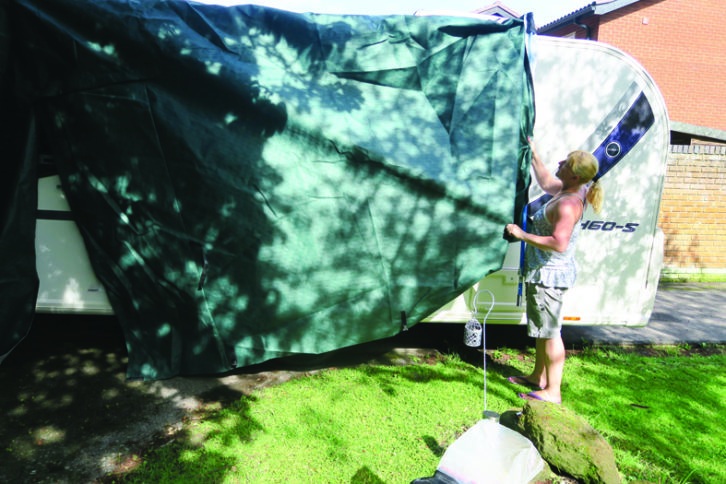
There are a number of jobs that need to be completed before laying up your caravan for the winter, so it’s a good idea to make a checklist, so you won’t forget any important tasks.
Finally, make sure that all of the windows, doors and skylights are locked and, if you have them, set any alarms or trackers. You don’t want any nasty surprises when you come back in the spring time!
If you liked this… READ THESE:
What you need to know about gas
If you’ve enjoyed reading this article, why not get the latest news, reviews and features delivered direct to your door or inbox every month. Take advantage of our brilliant Practical Caravan magazine SUBSCRIBERS’ OFFER and SIGN UP TO OUR NEWSLETTER for regular weekly updates on all things caravan related.
Future Publishing Limited, the publisher of practicalcaravan.com, provides the information in this article in good faith and makes no representation as to its completeness or accuracy. Individuals carrying out the instructions do so at their own risk and must exercise their independent judgement in determining the appropriateness of the advice to their circumstances. Individuals should take appropriate safety precautions and be aware of the risk of electrocution when dealing with electrical products. To the fullest extent permitted by law, neither Future nor its employees or agents shall have any liability in connection with the use of this information. You should check that any van warranty will not be affected before proceeding with DIY projects.
It's a good idea to make a checklist for winter preparation, so you don't forget to carry out any important tasks
